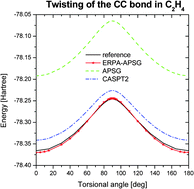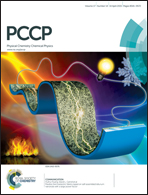ERPA–APSG: a computationally efficient geminal-based method for accurate description of chemical systems
Abstract
Most computational chemistry methods cannot provide a uniformly accurate description of dynamic and static electron correlation. In this paper we present the performance of the ERPA–APSG method based on the antisymmetrized product of strongly orthogonal geminal theory (APSG) and the recently proposed extended random phase approximation (ERPA) intergeminal correlation correction. We show that the ERPA–APSG approach is capable of accounting for both dynamic and static correlation, yielding excellent results when applied to describing conformational changes in molecules, twisting of the ethylene molecule, and deprotonation reactions.


 Please wait while we load your content...
Please wait while we load your content...